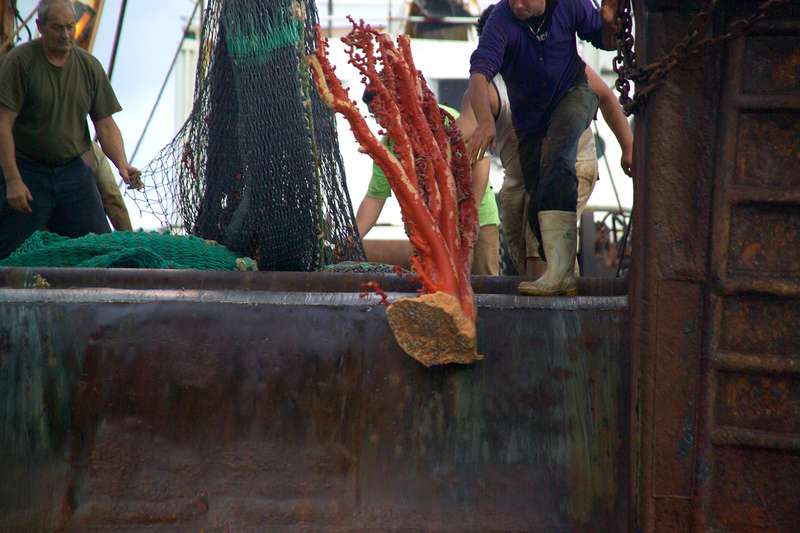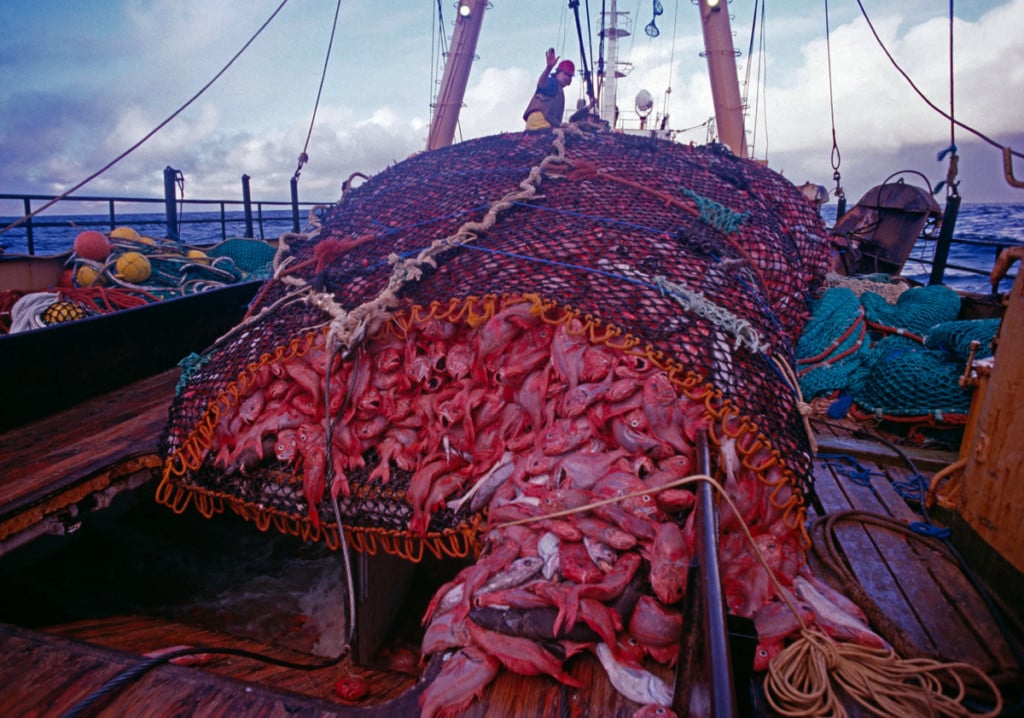It’s been an embarrassing few weeks for the New Zealand bottom trawling industry, with two revelations further shattering the ‘sustainability’ image commercial fishing companies work so hard to sell.
First, bottom trawling was named as one of the greatest threats to releasing carbon from the seabed back into ocean waters which could exacerbate climate change, in an authoritative new report that maps how carbon is stored in the seabed around Aotearoa. It was produced by NIWA for the Parliamentary Commissioner for the Environment who emphasised that “effective stewardship of carbon stocks is essential”.
Then, just a few days later, New Zealand lost the sustainability tick for key parts of the orange roughy fishery due to concerns over stock measurements. A deep water fish, orange roughy has been pummeled by New Zealand bottom trawlers for decades and is exported to countries including the U.S. and Europe. Many retailers in key export markets only buy certified fish, so losing the Marine Stewardship Council tick will likely hit the industry where it hurts.
Bottom trawling involves dragging huge, weighted nets on steel skids across the seafloor. It’s destructive, indiscriminate and indefensible as the planet warms and marine life is decimated.
These latest revelations further weaken the social licence of bottom trawlers in New Zealand and show that regardless of whether the fishing industry wants to admit it – and despite the appointment of a pro-industry Oceans & Fisheries Minister in Shane Jones – the age of bottom trawling is over. A transition away from it – inevitable.
As a fishing method, bottom trawling is responsible for a substantial chunk of the catch in New Zealand. It’s also responsible, ironically, for the destruction of the very ocean habitat that many bottom trawled fish, including orange roughy, depend on to thrive.
That’s because trawling doesn’t just pull in fish. The nets, some as wide as a rugby pitch, also rip up coral. Over 200 tonnes of coral were destroyed by New Zealand fisheries over a 13-year period, according to a report released by the Department of Conservation in September. Bottom trawling was responsible for 99% of that coral ‘bycatch’.

Marine animals, including dolphins, fur seals and sharks, also die in trawl nets, while seabirds get trapped as the nets pull close on the ocean surface. In the 2021-2022 fishing year alone, Ministry for Primary Industry figures show commercial fishing self-reported killing 195 marine animals and 792 seabirds.
Protecting this marine life and the ocean they call home, is why environmentalists, recreational fishers and ocean lovers keep pushing to get bottom trawling banned from where it does the most harm, like the hard-hit Hauraki Gulf and on seamounts in the deep sea.
As the Parliamentary Commissioner for the Environment (PCE) report outlines, bottom trawling on sandy, muddy areas releases carbon stores, exacerbating the climate crisis. Those carbon stores need to stay where they are, and the ocean’s ability to absorb carbon, protected at all costs .
Seafood New Zealand actively promotes wild-caught fish as having a lower carbon footprint compared to other animal proteins, but the research this claim is based on left out the carbon impact of bottom trawling the seafloor. Sealord also promotes “high nutrition, low emission” wild caught fish, again based on research that doesn’t count carbon released from the seafloor. The PCE report could be used as the basis for regulating bottom trawling based on carbon disturbance in the future.
When bottom trawling happens on seamounts and features – literally mountains, hills and knolls in the deep – the ancient coral ecosystems that grow there are destroyed. Some of the corals dragged up in trawl nets from seamounts in New Zealand, like stony corals, have been aged at thousands of years old.
Orange roughy use seamounts to spawn in the winter. This is peak trawling season because targeting the fish when they school together to breed makes them easier to catch.

In July this year, a review by the Ministry for Primary Industries revealed serious sustainability concerns with key parts of the orange roughy fishery. Fish have disappeared from seamounts usually used for spawning, and trawlers were spending hours longer trawling, but returning with fewer fish. This data shows a fish that’s in trouble, which is perhaps not surprising, given the repeated targeting of a slow-growing fish species while it’s trying to rebuild its numbers.
Yet bottom trawling is being defended all the way to the bank by corporate fishing companies in Aotearoa.
Now, perhaps emboldened by a Fishing Minister who in his last time in the role dubbed himself “the apostle of industry”, we can expect to see industry continue status quo destruction, while rolling out more greenwash.
Sealord’s CEO Doug Paulin has already been quoted saying that despite losing the Marine Council Stewardship tick, New Zealanders can continue to buy orange roughy with confidence.
Rather than using its PR machine to mislead the public, the industry would be better off using that time and money to adapt to the fact that bottom trawling has got to go.
The question really is, at what stage does this delusional industry have to accept the truth? The days of this fishing method are numbered, and tens of thousands of New Zealanders agree. Over 100,000 people have signed petitions to ban trawling on seamounts, and 84% of people living around the Hauraki Gulf want it gone from their blue backyard.
The fishing industry has a choice: change or be forced to change. In the case of orange roughy, their resistance to proper seamount protections now means their export bottom lines will be hit anyway because the fish are depleted, and their sustainability tick lost. Key markets will refuse to buy their fish, and they’ve only got themselves to blame.
Starting the transition from trawling now is smart business sense as well as the right thing for the ocean, the creatures that live there and the climate we all depend on. The fact remains that if the fish are gone, profit can’t be made. Not even a Minister who will bend over backwards for commercial interests can save them from that.

At home and far out to sea, our oceans are being plundered for profit by the fishing industry through bottom trawling. But what is bottom trawling and why is it so destructive to ocean habitats?
